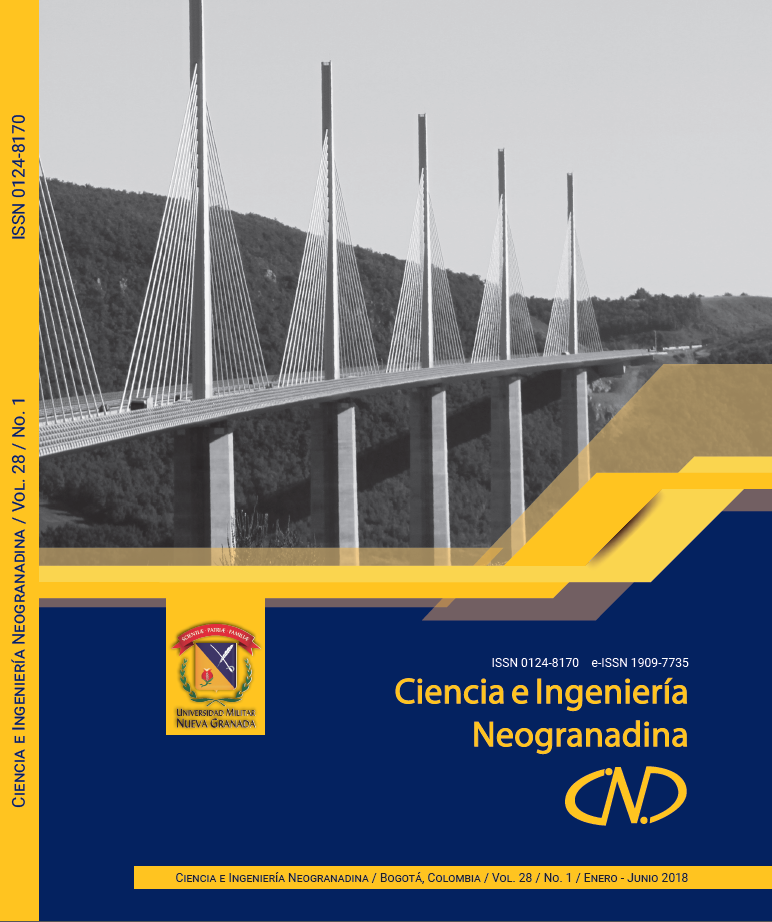Application of non-destructive Pull-Off and ultrasonic techniques in reinforcement quality control with composite materials in concrete structures
Abstract
The reinforcement system of concrete structures using composite materials has been widely used for more than fifty years. However, there are still many unknowns regarding their longterm behavior, as the control of the bond between the concrete and the reinforcement materials being essential to ensure their quality. It is a reinforcement system that is made by adhesion, and as consequence of the uncertainty on the adhesion tension, in practice, it is solved with anchorages that make the work more expensive and which are not feasible for large areas of reinforcement. A correct installation that guarantees the proper behavior of the reinforcement materials would optimize this type of strengthening system and its applicability. The implementation of an appropriate quality control plan guarantees the optimization of the system and allows to establish the proper maintenance criteria. This research presents an experimental program for the quality control of laying, based on the study of the bond between the concrete and fiber composite sheets, taking into account different types of concrete and surface preparation techniques. An in situ quality control plan with semi-destructive pull off and non-destructive ultrasonic type tests allows verifying the effectiveness of the reinforcement.
Downloads
References
W. R. Escobar, H. B. Barrera y H. V. Amarís, “Importancia estratégica de los nuevos materiales en el desarrollo sostenible y como alternativa de competitividad,” Revista Ciencia e Ingeniería Neogranadina, vol. 8, pp. 33-42, 1999.
A. Besednjak y A. B. Dietrich. Materiales compuestos. Barcelona, España: Universidad Politécnica de Cataluña, 2009.
M. Olivares Santiago, C. Galán Marín y J. Roa Fernández, “Los Composites. Características y aplicaciones en la edificación,” Informes de la Construcción,” vol. 54, no. 484, pp. 45-62, 2003. DOI: https://dx.doi.org/10.3989/ ic.2003.v54.i484.568.
C. E. Bakis, A. Ganjehlou, D. I. Kachlakev, M. Schupack et al. (2002). Guide for the design and construction of externally bonded FRP systems for strengthening concrete structures. ACI Committee, 440. Michigan, Estados Unidos: American Concrete Institute.
T. Horiguchi y N. Saeki, “Effect of Test Methods and Quality of Concrete on Bond Strength of CFRP Sheet. Non-Metallic (FRP) Reinforcement for Concrete Structures,” en 3th. Int. Symp. Japan Concrete Institute, 1997, pp. 265-270.
D. G. Allen y R. A. Atadero, “Evaluating the long-term durability of externally bonded FRP via field assessments,” Journal of Composites for Construction, vol. 16, no. 6, pp. 737-746, 2012. DOI: https://doi.org/10.1061/ (ASCE)CC.1943-5614.0000305
Y. Bai, P. A. M. Basheer, D. J. Cleland y A. E. Long, “State-of-the-art applications of the pull-off test in civil engineering,” International Journal of Structural Engineering, vol. 1, no. 1, pp. 93-10, 2009. DOI: https://doi. org/10.1504/ijstructe.2009.030028
ASTM D7522. Standard Test Method for Pull-Off Strength for FRP Laminate Systems Bonded to Concrete Substrate, ASTM International, West Conshohocken, PA, 2015. DOI: https://doi. org/10.1520/D7522_D7522M-15
T. Alkhrdaji, E. R. Fyfe, V. M. Karbhari, M. Schupack et al. 440.3R-12 Guide Test Methods for Fiber-Reinforced Polymers (FRPs) for Reinforcing or Strengthening Concrete Structures. Michigan, Estados Unidos: American Concrete Institute, 2004.
UNE-EN 1542. Productos y sistemas para la protección y reparación de estructuras de hormigón. Métodos de ensayo. Determinación de la adhesión por tracción directa. Madrid, España: Aenor, 2000.
C. Scarponi y G. Briotti, “Ultrasonic technique for the evaluation of delaminations on CFRP, GFRP, KFRP composite materials,” Composites Part B: Engineering, vol. 31, no. 3, pp. 237-243, 2000. DOI: https://dx.doi.org/10.1016/ S1359-8368(99)00076-1
F. Bastianini, A. Di Tommaso y G. Pascale, “Ultrasonic non-destructive assessment of bonding defects in composite structural strengthenings,” Composite Structures, vol. 53, no. 4, pp. 463-467, 2001.
M. Ekenel y J. J. Myers, “Nondestructive evaluation of RC structures streng thened with FRP laminates containing near-surface defects in the form of delaminations,” Science and Engineering of Composite Materials, vol. 14, no. 4, pp. 299-315, 2007.
R. Helmerich, B. Milmann y J. Wöstmann, “Non-destructive detection of surface-bond defects in carbon composite-strengthened concrete structures,” Structure and Infrastructure Engineering, vol. 11, no. 1, pp. 3-14, 2015. DOI: https://doi.org/10.1080/1573247 9.2013.879322
M. Ekenel y J. J. Myers, “Durability performance of RC beams strengthened with epoxy injection and CFRP fabrics,” Construction and Building Materials, vol. 21, no. 6, pp. 1182-1190, 2007. DOI: http://dx.doi.org/10.1016/j. conbuildmat.2006.06.020
A. De Diego, A. Arteaga, J. Fernández, R. Perera y D. Cineros, “Behaviour of FRP confined concrete in square columns,” Materiales de Construcción, vol. 65, no. 320, pp. 1-9, 2015. DOI: http://doi. org/10.3989/mc.2015.05414
J. Szymanowski y Ł. Sadowski, “Ultrasonic Pulse Velocity Evaluation of the Pull-Off Adhesion between Epoxy Resin and Concrete Substrate,” en Key Engineering Materials (vol. 728) Trans Tech Publications, Polonia, Wroclaw University of Sccience and Technology, 2017, pp. 390-395.
UNE-EN 12390-5. Ensayos de hormigón endurecido. Parte 5: Resistencia a flexión de probetas. Madrid, España: Aenor, 2005.
UNE-EN 12504-4. Ensayos de hormigón en estructuras. Parte 4: Determinación de la velocidad de los impulsos ultrasónicos. Madrid, España: Aenor, 2006.











